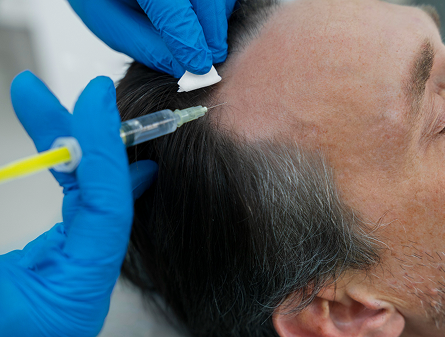Pulsed Electromagnetic Field (PEMF) therapy uses low-frequency electromagnetic fields to encourage healing in tissues. This can have a regenerative effect on the body’s cells which can help in the treatment of hair loss.
Low-level laser therapy (LLLT) uses wavelengths of light on the “near-infrared” and red side of the visible light spectrum on skin tissue to stimulate cells causing hair to grow. Both treatments can be performed either at home or in a clinic although LLLT is more widely available compared to PEMF.
PEMF can be combined with LLLT for effective clinical results while LLLT can be combined with minoxidil in a clinic or at home to improve results. Explore the differences between PEMF treatment and LLLT with the handy comparison table below.
- PEMF uses low-frequency electromagnetic waves to stimulate cellular activity, improve blood flow, and promote follicle function.
- PEMF is non-invasive and painless.
- It can be used at home or in clinical settings.
- It is ideal for early thinning or general scalp support.
- PEMF carries no serious risk and has no downtime.
- Laser therapy uses low-level laser light (LLLT) to stimulate energy in cells, which encourages circulation and hair growth.
- Laser treatments are often applied by caps, combs, or clinical devices.
- It is non-invasive and drug-free.
- Suited for consistent, long-term use.
- Laser therapy requires frequent sessions to maintain effects.
- PEMF devices have a moderate to high upfront cost depending on the model, but may become cost-effective over time.
- Costs vary more than laser therapy, depending on device sophistication and brand.
- Laser therapy devices also range from moderate to high in cost, with most at-home options being a one-time investment.
- Unlike PEMF, some users may pay more for premium laser caps or in-clinic sessions.
- PEMF typically requires daily or frequent sessions lasting 15–30 minutes.
- Compared with laser treatment protocols, PEMF therapy schedules are similar but more variable in session type.
- Laser treatment is usually performed 3–7 times per week, 15–30 minutes per session.
- Compared to PEMF, session frequency can be less, but consistency remains the key to long-term outcomes.
- PEMF stimulates the scalp by delivering pulsed electromagnetic waves to rejuvenate cellular activity and promote circulation.
- As opposed to laser therapy, PEMF works on electrical fields and not light.
- Treatment with lasers delivers low-level red light to activate cells and support hair follicle growth.
- Unlike PEMF, it employs photobiomodulation rather than electromagnetic fields to stimulate.
- PEMF is considered safe with no significant side effects when used as directed.
- Compared to laser therapy, it may feel gentler and doesn’t cause warmth or light sensitivity.
- Laser therapy is generally safe but can occasionally cause scalp warmth or irritation in sensitive individuals.
- Compared to PEMF, prolonged use of high-intensity devices may require moderation.
- PEMF requires the setup and positioning of a specialised device and a quiet session environment.
- The process may be slightly less automated than laser therapy, depending on the equipment.
- Laser therapy often comes in wearable forms like caps that run automatically once started.
- Unlike PEMF, laser devices require minimal effort during each session.
- PEMF devices are available online but may be less common in retail stores or clinics.
- In contrast to laser therapy, fewer Australian clinics specifically offer PEMF for hair regrowth.
- Laser therapy is widely available through online stores and some dermatology clinics.
- Compared to PEMF, it’s more mainstream and recognised for hair treatment applications.
- PEMF may gradually improve hair and scalp health with continued use.
- Compared to laser therapy, the long-term effects are promising but less well-researched in hair-specific applications.
- Laser therapy has a strong research base supporting hair regrowth, especially in early-stage loss.
- Unlike PEMF, results are often more predictable if used consi
- PEMF works well alongside supplements, topical products, and even laser therapy in some regimens.
- Compared to laser therapy, it complements treatments focused on follicle support and inflammation reduction.
- Laser therapy can be combined with minoxidil, finasteride, or PEMF for enhanced outcomes.
- Unlike PEMF, it is often paired with pharmacological agents in structured treatment plans.
- PEMF appeals to users looking for a gentle, tech-based solution with minimal side effects.
- Compared to laser therapy, it offers a unique modality that supports a holistic approach.
- Laser therapy appeals to users looking for visible, evidence-backed technology.
- In contrast to PEMF, its long-standing use in hair clinics lends added confidence to its effectiveness.
- PEMF promotes healing, reduces inflammation, and supports overall scalp health without medication.
- Compared to laser therapy, it may benefit a wider range of wellness concerns beyond hair growth.
- Laser therapy improves cellular energy and scalp blood flow, aiding hair density and quality.
- Unlike PEMF, its benefits are more hair-specific and supported by broader dermatological research.
- PEMF creates minimal waste once the device is purchased, though it consumes electricity with each session.
- Compared to laser therapy, the environmental footprint is similar.
- Laser therapy devices also produce little waste and have a long usable life.
- Unlike disposable treatments, laser and PEMF are more long-term and sustainable.
Shop our hair solutions
We are committed to providing affordable hair regeneration services for people all over Australia. Our formula can help you regain your confidence.
Shop Now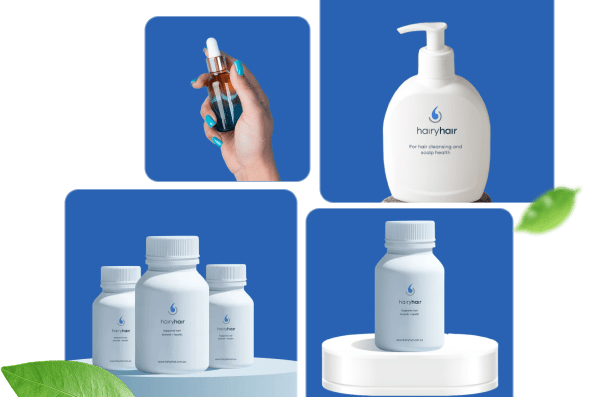

PEMF vs Laser Hair Therapy Comparison Summary
PEMF therapy results can vary depending on the hair growth cycle of the patient. Studies have shown that PEMF treatment can be effective in the long term as hair regrowth continues after 16 months in some studies. When looking at cold laser therapy vs PEMF, LLLT is the only FDA-approved non-pharmaceutical treatment for hair loss currently.
At-home LLLT devices are much cheaper than PEMF devices but prices should drop as more competitors enter the market. PEMF treatments may not be as widely available as LLLT treatments in clinics as they are a relatively new treatment. In looking at a hair restoration comparison, the recommended treatment period for LLLT is 6 to 12 months while PEMF therapy is typically only 6 months.
Studies have not shown negative side effects when either treatment is used in the long term and both can offer some short-term results as well. While there are no reported side effects with PEMF, some LLLT patients reported itching, acne and scalp sensitivity. However, these were mild and not severe enough to require the treatment to be discontinued.
PEMF vs Red Light Therapy User Guidance
Both treatments provide at-home options but LLLT devices are more widely available. PEMF therapy may be recommended if you are already attending a dermatologist for hair loss as it can be combined with other clinical-grade treatments like LLLT.
If performing LLLT at home, it can be easily incorporated into your weekly routine as they require fewer sessions compared to PEMF. LLLT at-home sessions are performed 3 times a week for 15 to 20 minutes while PEMF therapy at home is performed every day for 30 minutes.
LLLT for hair loss requires regular maintenance sessions to maintain the results. PEMF therapy requires semi-regular sessions to maintain results meaning it may be less upkeep in the long term.
Take Our Hair Loss Quiz to See Which Treatment Suits You?
Take A Hair Quiz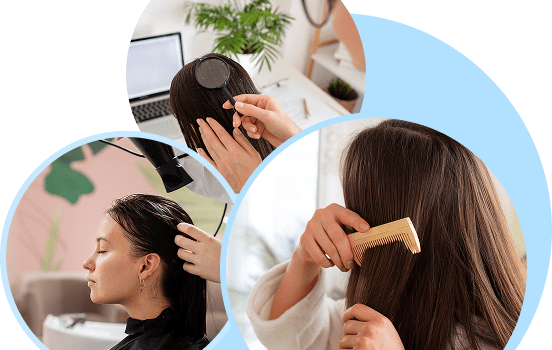

Frequently Asked Questions
We have put some commonly asked questions.
Nunc scelerisque tincidunt elit. Vestibulum non mi ipsum. Cras pretium suscipit tellus sit amet aliquet. Vestibulum maximus lacinia massa nontor.
Platelet-rich plasma (PRP) treatment involves drawing blood from the patient, isolating the beneficial nutrients and injecting it into the scalp where hair loss is occurring. This promotes hair growth and has many other applications from encouraging healing to skin rejuvenation.
Platelet-rich plasma (PRP) treatment involves drawing blood from the patient, isolating the beneficial nutrients and injecting it into the scalp where hair loss is occurring. This promotes hair growth and has many other applications from encouraging healing to skin rejuvenation.
Platelet-rich plasma (PRP) treatment involves drawing blood from the patient, isolating the beneficial nutrients and injecting it into the scalp where hair loss is occurring. This promotes hair growth and has many other applications from encouraging healing to skin rejuvenation.

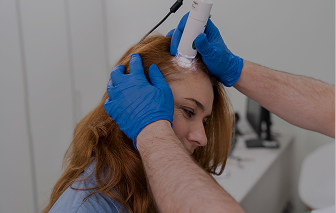

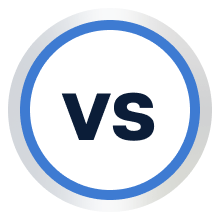

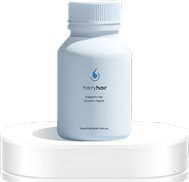
 See All
See All